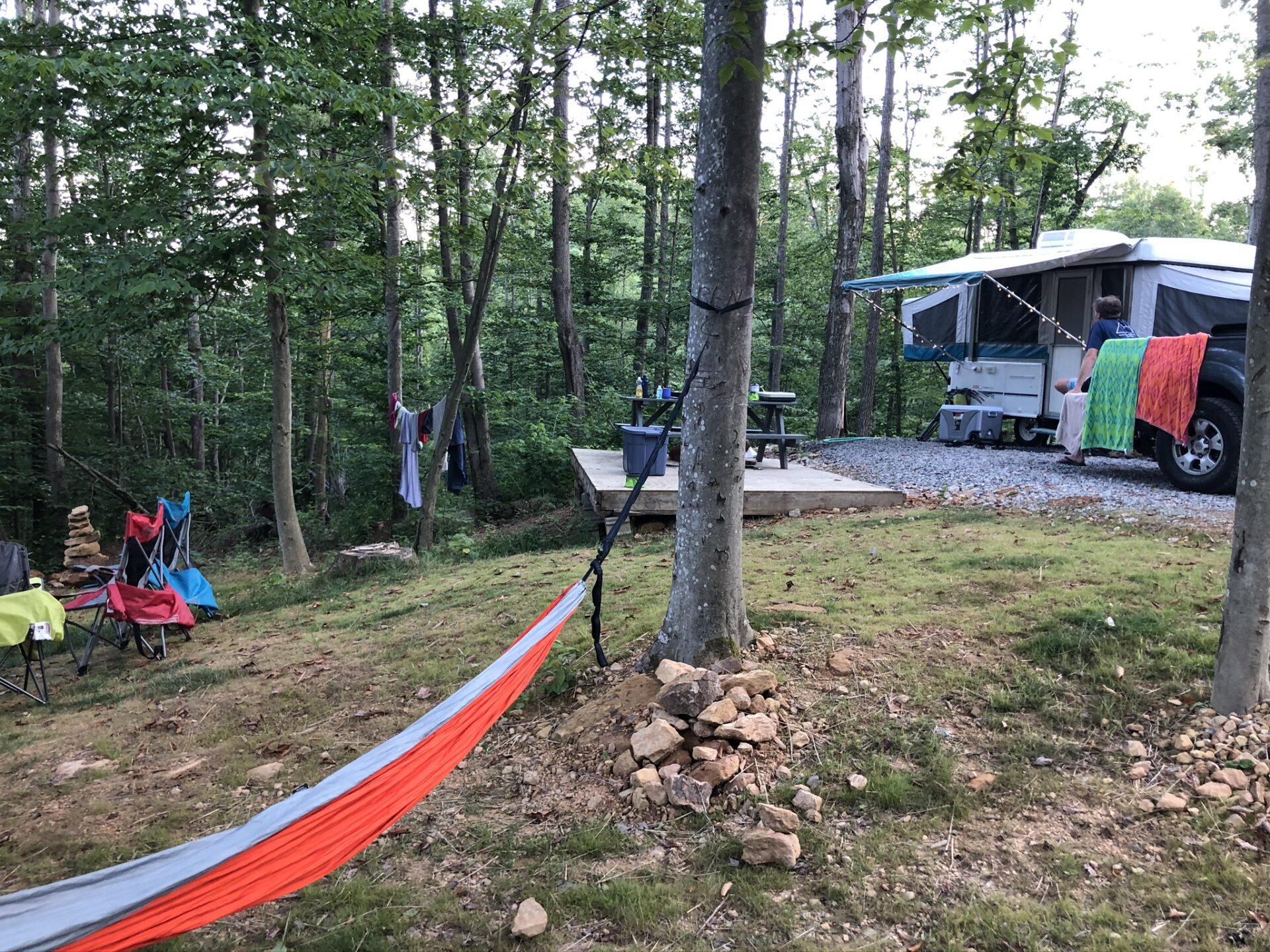
Many families are diving into the recreational vehicle market with COVID-19 now a seemingly-permanent part of our landscape. Since hotels, flights and international trips seem, at this time, limited or off the table, families are jumping into RVs and the camping world. After all, what better way to have a safe family adventure than to be outside and to bring your own house with you!?
In fact, so many folks are shopping for and purchasing RVs, the market is having a hard time keeping up. The numbers don’t lie. According to RV Industry Association’s report in June:
RV wholesale shipments tracked by the RV Industry Association posted their best month in 2020 and the highest monthly total since October 2018 as deliveries to retailers reached 40,462 units in June, a 10.8% rise over the June 2019 total of 36,525 units. Towable RVs, led by conventional travel trailers, totaled 37,439 units for the month, a gain of 12.9% of compared to last June’s total of 33,171 shipments.
RV Industry Association
But before you join in and go diving head-first into the RV market with daydreams of nights filled with the kids singing around the campfire while your RV glistens and beckons cozily behind you, it’s important to take a moment and consider a few points.
Our family bought a used pop-up in early May. It was something we had actually been researching, discussing, and watching the market on since September of last year (pre-COVID). Our kids are at a great camping age (8 and 11 years old) and I grew up with a pop-up camper I have fond childhood memories of. Further, Mr. Family Trip and I knew we loved camping, given backpacking and tent camping adventures we’d already had.
(If you haven’t actually used or camped in an RV, I recommend using RV Share to rent and try it out before buying your own.)
But, we also knew that we did not want to go into debt and take on a monthly payment for a hobby.
I can’t stress this strongly enough. RVs can be expensive. And while some are taking on a monthly payment to support this (perhaps pandemic pressured) decision, it is prudent to take a moment and look honestly at budget and cost.
Remember that your RV will also need to be placed on a campsite that will charge a fee, not to mention the accessories and fun things you will want/need to buy for your new RV (which is, after all, a lot of the fun of this new hobby). Plus, you will spend more in gas, whichever type of motorhome you purchase. And depending on the type of neighborhood you live in, you may need to pay for a storage lot space to park your RV when not in use. It can add up – quickly.
If you look at how many nights you are actually likely to use your RV, break it down into how much you are paying per day based on the monthly payment you are assuming (I love Mr. Money Mustache’s theory on this concept). While we aren’t 100% Dave Ramsey in this household, we do believe in his general principles. I can’t help but take a moment to urge us all to consider his tips as we rush excitedly into the RV market: what is worth taking on debt for?
Which brings me to a few other reasons why we chose a pop-up.
One: we knew we wanted our car and our RV separate from one another. When we were in Zion, we saw how painful it was for Class A motorhomes, and in Yellowstone there were many roads closed to Class A and Class Cs. We wanted something easy to tow that would be separate from our car. But that, as stated, we could still pay cash for.
Two: we wanted to have our times out be camping experiences and were committed to this idea. We wanted to feel connected to nature. We wanted our camping trips to still feel like we were living outdoors in God’s great earth with just each other. That meant we knew where we wanted to compromise (I, for example, desperately wanted A/C if we were going to be camping during the summer) yet also what we DIDN’T want (I was further adamant that we would not have a TV on our camping trips). We knew the type of camping experience we wanted. (Because I guess it isn’t really camping unless you have to walk in the middle of the night over a gravel road to go to the bathroom??)
And, finally, the last consideration for us was resale value. Like a new car, RVs considerably diminish in value the moment you drive them off the lot. Yet not all recoup value in a resale market (especially, as I might contend, that the resale market is going to be SWAMPED in about two years).
We had been watching the used RV market in our region for months and knew what things were going for, what the demand was, and what we thought we could invest and eventually come close to making back.
So, to reiterate: 1) we knew we loved camping and had a lot of experience with it, 2) we had a strict cash budget and wanted to stick to it, 3) we had a sense of how often we would actually use our RV, 4) we knew we wanted our car to separate from our vehicle and also wanted something easy to tow, 5) we wanted very much for it to still be a camping experience for our sons, and 6) we had been tuned into the market for quite some time to understand value and demand.
In the end, we ended up with our 20+-year old used Coleman pop-up camper that we’ve named “Shirley Jean” (after our grandmothers).
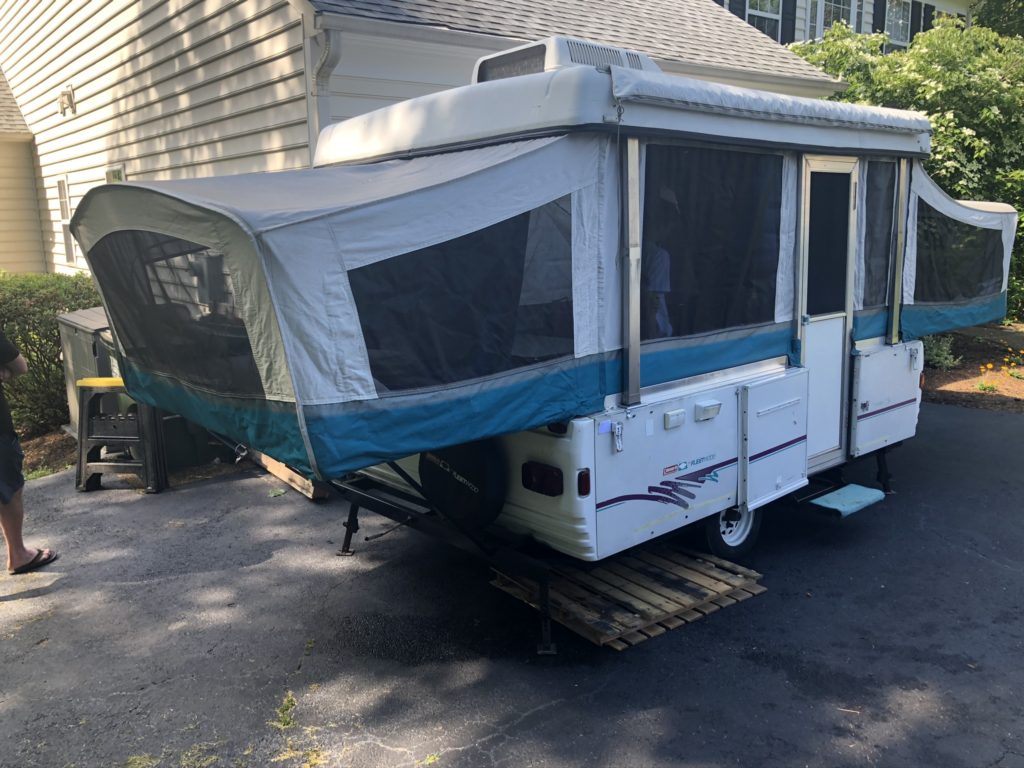
Here is what we’ve learned from our experience so far.
Tips for Buying a Pop Up Camper:
#1: Don’t buy a new one!
Many articles and RV owners have already shared this as their top tip, and let me add to that chorus. Quite a few mention that a family’s first RV is usually an introductory one, and they end up selling and buying something else a few years later when experience has taught them what they really want and need. They argue it is best not to go in debt on that first RV. Of course, I will add that you may be in a financial position where your cash ability far exceeds our own, in which case: go forth and buy that new RV that has a bathroom!
#2: Know (in general) what you want, and what you think it is worth.
Take some time to figure out what you want and need in a camping experience. Then do some research both at RV retailers as well as on used after-market sites to see what you think you want is worth. Do the research, then don’t get carried away by bells and whistles as you begin to shop. Stick to what you want, and what you think it is worth.
#3: Decide how much work you are willing to put in.
Every single RV (used or new) will require you to work. You can start at the bottom and get a used camper you want to renovate and make your own, or get a shiny new RV you get to drive off the lot straight onto a campsite. But know that even that brand new purchase is still going to require you to learn how it works, how to plug in, how to clean black water versus gray water, and so on. An RV will be work. We opted for a middle-of-the-road option where the pop-up was completely usable from Day One, but upgrades and personalizations were affordable.
#4: Set up an alert, make a schedule, or otherwise determine how often and where you are going to check listings and postings.
When you decide what you want, how much it is worth, and how much work you are willing to put in, BE PATIENT.
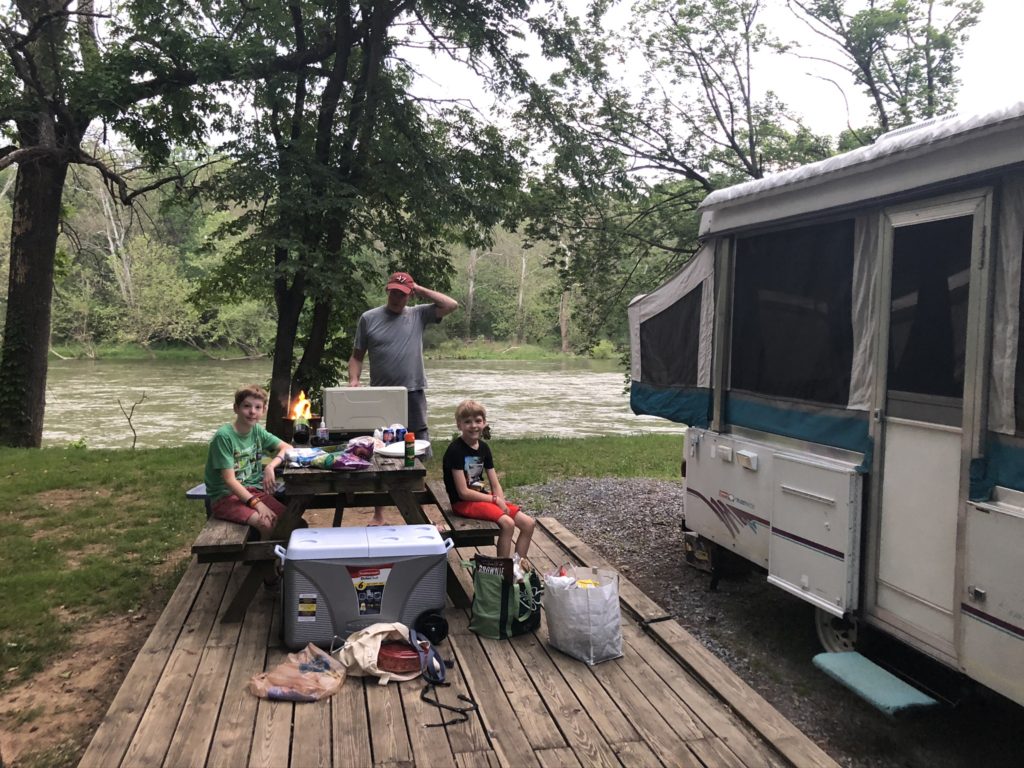
#5: Watch out for scams!
They exist in the RV market. If it seems too good to be true, it probably is.
#6: Check on whether you will have clear title, and ask other relevant questions.
If you are buying used, be sure you can get the title! If the seller doesn’t have it, know what it would take to get it. This will help your resale value as well as keep you legal on the road (which is important). Also, don’t be shy to ask other questions about function and issues, even if it is a brand new RV.
#7: Be prepared to move fast!
Once you know what you want, what it is worth, how much work you are willing to put into it, and have all your questions answered, you’ve got to be prepared to JUMP. The RV market is turning over very quickly right now because demand is high. When you find what you want, you have to be prepared to commit and go for it.
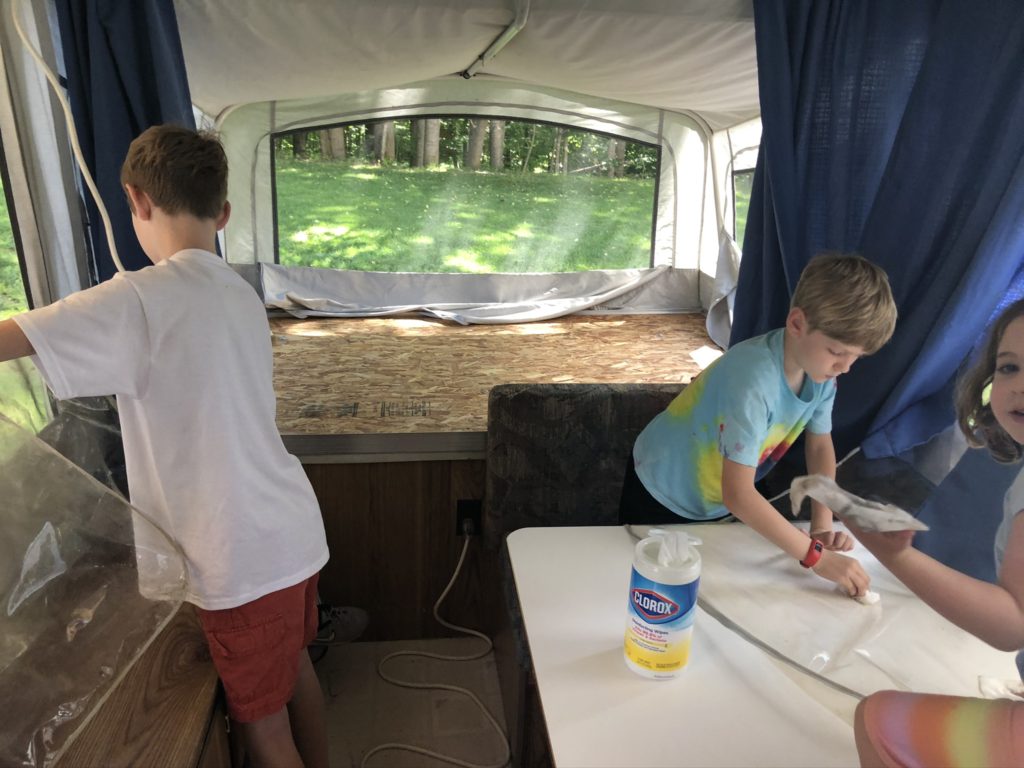
#8: Show up ready to buy (with a trailer hitch and a light connection), but test everything first.
Also, have the owners take some time showing you how it works. If anything strikes you as wrong or off, feel free to walk away – given the competitive market, they will likely be able to sell it quickly anyhow.
#9: Once you get it home, open it up, clean it up, get it titled and tagged, make sure you have insurance!
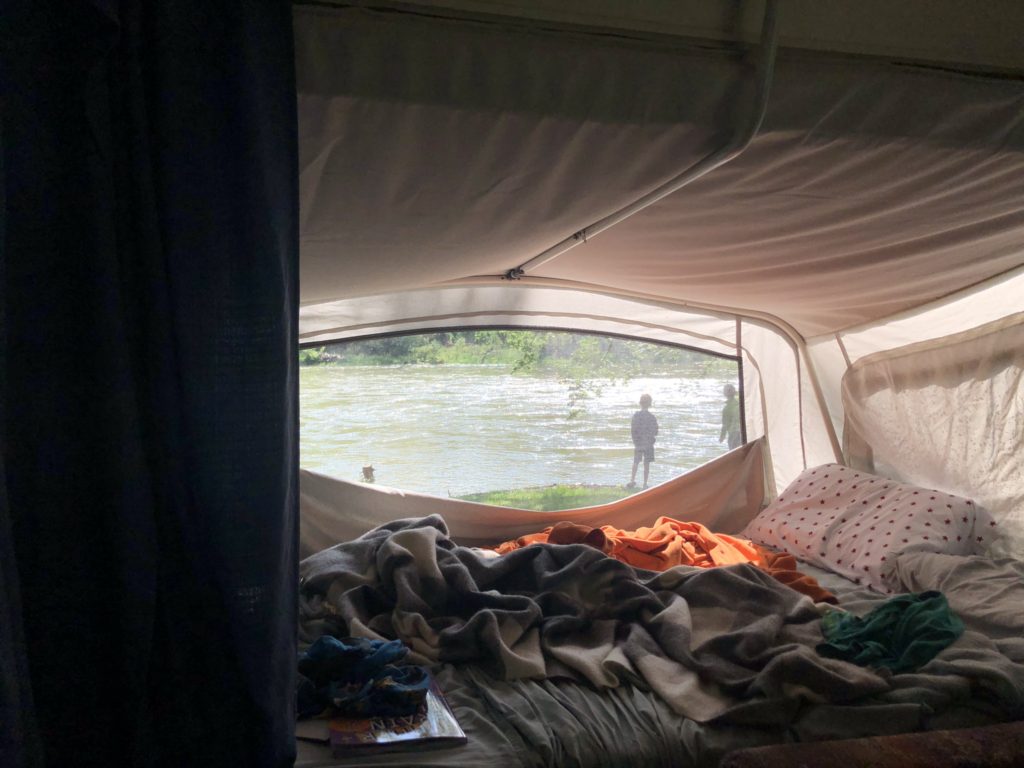
#10: For your first trip, don’t go too far from home!
Once you get your RV home, you will be SO EXCITED. And you should be, congratulations! But before you take off on an epic week-long road trip, stick close to home for the first trip. If something goes wrong or if there is something you can’t figure out, it’s nice to know you’re not too far from a Plan B. (For example, on our very first trip we were convinced we weren’t going to be able to get one of the beds to slide out: it kept getting stuck. We eventually got it, but knowing that we could turn around and go home and weren’t reliant on Shirley Jean that night was a reassuring feeling.)
MOST IMPORTANTLY: HAVE FUN!
Having our RV has already been a wonderful adventure for us, one that we’ve enjoyed (even if it does come with some work attached). We’ve already been to a campsite off the Shenandoah River, to Assateague and Chincoteague, to the New River, to the Virginia Creeper Trail and to the Smoky Mountains. It’s been so fun to hit the road in a way that feels safe and socially distanced yet also full of unique memories. I am already quite attached to Shirley Jean and I’d say this purchase has been a smart one for us.
Remember that whatever you get, or even if you opt not to, it can be a very fun family trip.
